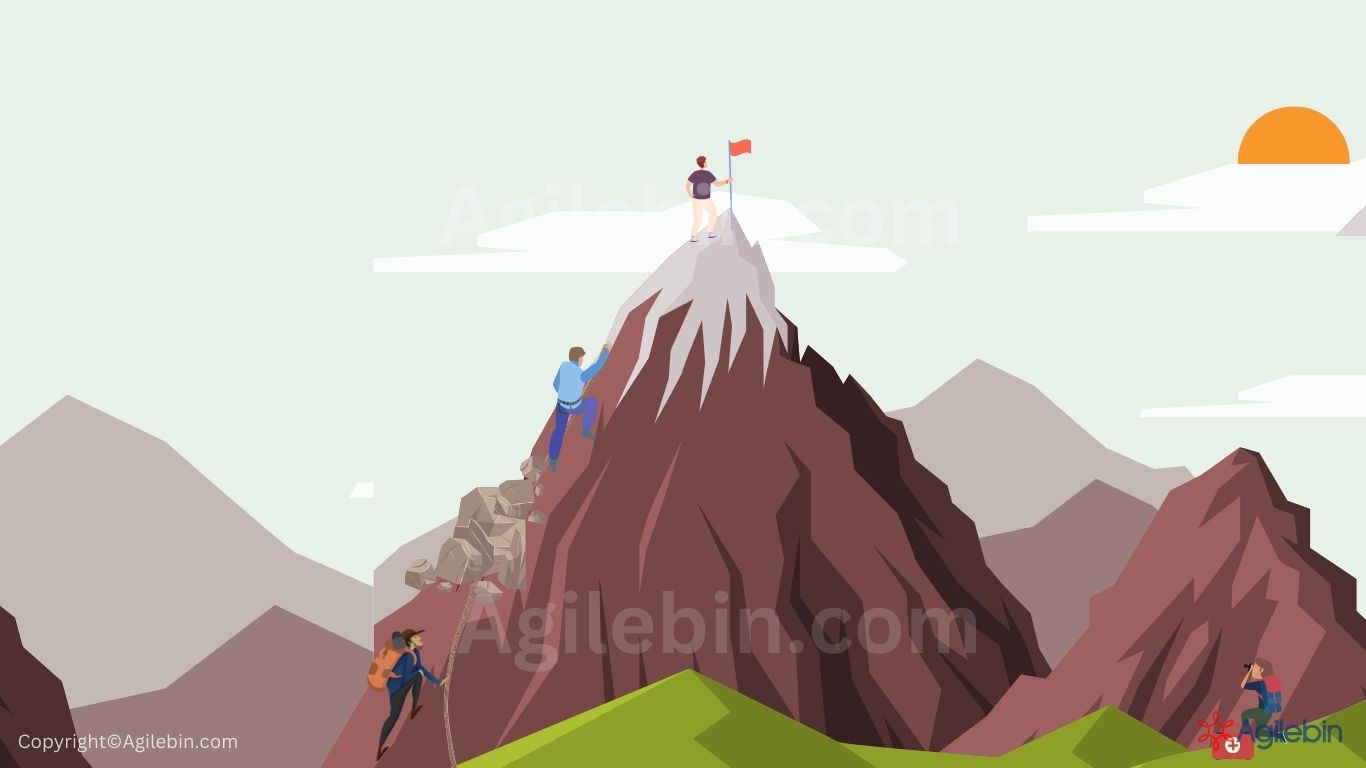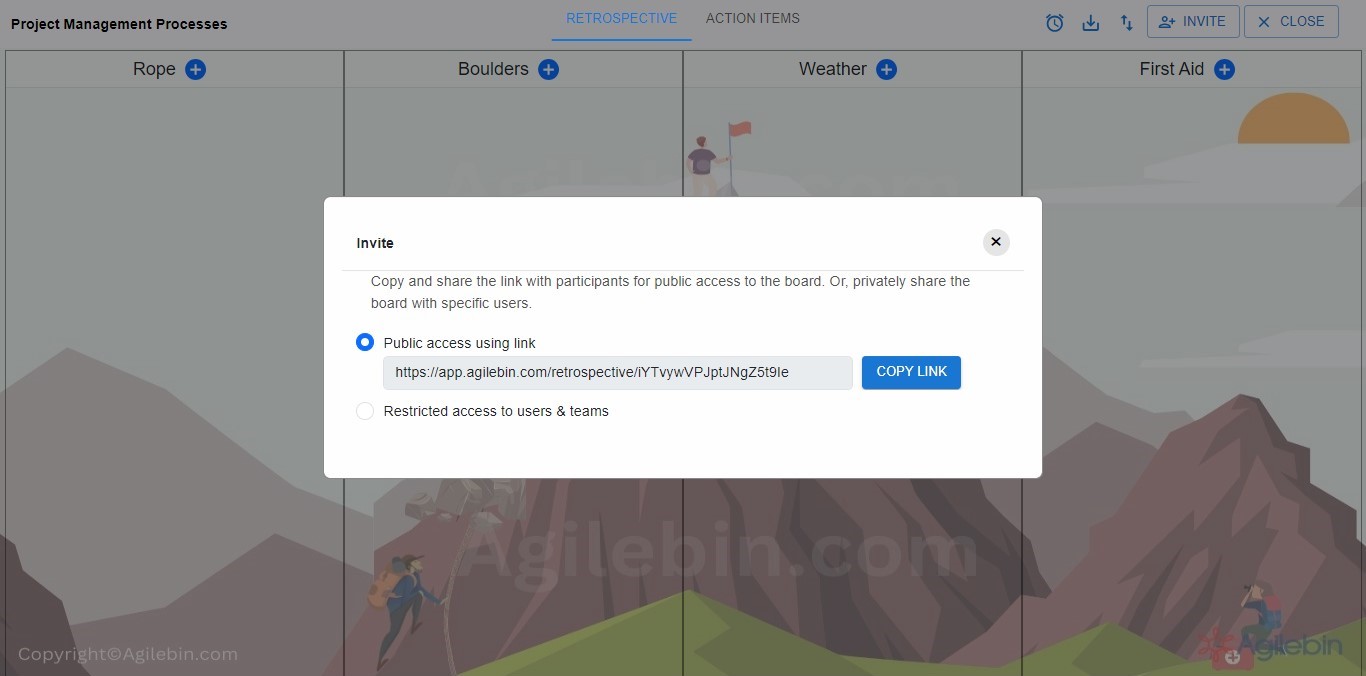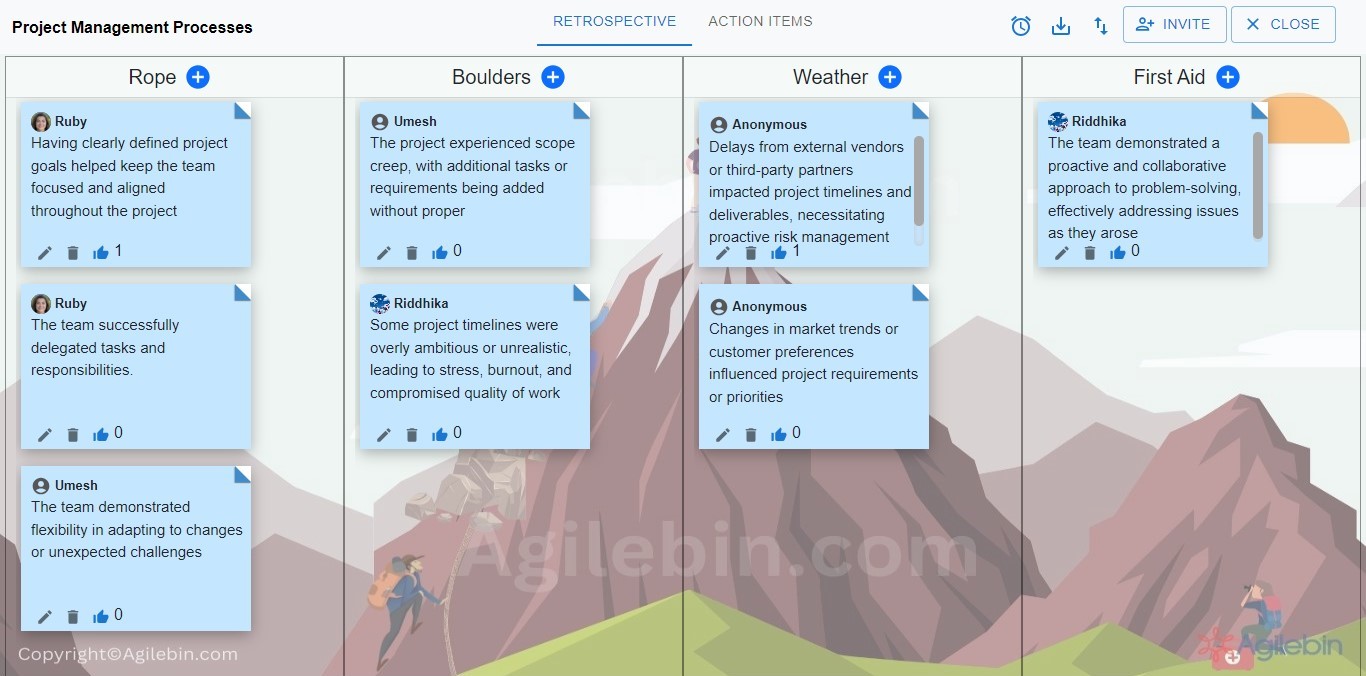Mountain Climber Retrospective
A retrospective template inspired by the challenges and victories of mountain climbing

What is Mountain Climber Retrospective?
The Mountain Climber Retrospective is a variation of the traditional retrospective meeting format, inspired by the challenges and victories experienced during mountain climbing. In this retrospective, teams reflect on their recent sprint or project, drawing parallels between the journey of climbing a mountain and the journey of completing a project or sprint. Just as mountain climbers face obstacles, setbacks, and triumphs during their ascent, project teams encounter challenges, successes, and opportunities for improvement in their work.
During the Mountain Climber Retrospective, team members discuss the obstacles they faced (representing the challenges of climbing a mountain), celebrate their achievements and successes (symbolizing reaching the summit), identify areas for improvement and growth (finding new trails or paths), reflect on lessons learned from their experiences, and plan actionable steps for the next phase of their journey.
How to Run Mountain Climber Retrospective?
To run a Mountain Climber Retrospective, follow these steps
- Set the Stage: Begin by explaining the concept of the Mountain Climber Retrospective to the team. Emphasize the parallels between climbing a mountain and completing a project or sprint.
- Create a Visual Representation: Use a whiteboard or flip chart to draw a simple mountain with different sections representing stages of the project or sprint journey.
- Gather Feedback: Invite team members to share their thoughts, experiences, and observations about the sprint or project journey.
- Identify Themes and Insights: As team members share their feedback, identify common themes, patterns, or insights that emerge.
- Reflect and Discuss: Encourage open discussion among team members about their experiences and observations.
- Generate Actionable Items: Work together as a team to brainstorm actionable items or strategies for improvement.
- Create an Action Plan: Document the actionable items identified during the retrospective and create an action plan with specific tasks, responsibilities, and timelines.
- Follow Up: Schedule regular follow-up meetings to track progress on action items and continue the cycle of continuous improvement.
Columns in Mountain Climber Retrospective
- Rope: The "Rope" column represents the tools, resources, or support systems that helped the team navigate challenges and obstacles during the project or sprint, akin to a climber's rope providing safety and assistance. For example, in a software development project, the "Rope" could include project management tools, collaboration platforms, or mentoring sessions that facilitated smooth progress.
- Boulders: In the "Boulders" column, the team reflects on significant obstacles, challenges, or barriers encountered during the journey, similar to large boulders that climbers must overcome. For instance, in a marketing campaign, the "Boulders" might include budget constraints, technical limitations, or unexpected market shifts that impeded the campaign's success.
- Weather: The "Weather" column symbolizes external factors or influences that affected the team's progress or performance, such as market conditions, client interactions, or unforeseen circumstances. For example, in a product development sprint, the "Weather" could encompass changes in customer preferences, regulatory updates, or competitive pressures that impacted the team's deliverables and timelines.
- First Aid: In the "First Aid" column, the team discusses the lessons learned from mistakes, failures, or setbacks encountered during the project or sprint, emphasizing the importance of learning from experiences to prevent similar issues in the future. For instance, in a customer service improvement initiative, the "First Aid" might involve analyzing customer complaints, service outages, or communication breakdowns to identify areas for process refinement and skill development.
When to do a Mountain Climber Retrospective
The Mountain Climber Retrospective can be conducted at various points in a project's lifecycle to evaluate progress, address challenges, and enhance team performance. It is particularly beneficial
- After completing a challenging phase: Conduct a retrospective after overcoming significant obstacles, such as tight deadlines, complex tasks, or high-stakes deliverables. Reflecting on the team's strategies, communication, and problem-solving during these periods can reveal valuable insights for future projects.
- Following unexpected setbacks: When the project encounters unexpected issues or failures, conducting a retrospective can help the team identify root causes, learn from mistakes, and adapt its approach to prevent similar issues in the future. It's essential to create a safe environment where team members feel comfortable sharing their experiences and insights.
- Prior to starting a new phase: Before embarking on a new project phase or iteration, it's essential to review past performance to inform planning and ensure that the team carries forward successful strategies while addressing areas needing improvement. By conducting a retrospective at this stage, teams can set clear goals, refine processes, and align expectations for the upcoming phase.
- During regular intervals: Regularly scheduled retrospectives, such as at the end of each sprint or iteration, provide opportunities for continuous improvement. By reflecting on recent work and team dynamics, the team can iteratively enhance its processes and collaboration. These retrospectives also serve as checkpoints to assess progress towards project goals and identify emerging issues before they escalate.
How can you conduct a Mountain Climber retrospective with Agilebin?
Effortlessly conduct a Mountain Climber retrospective with Agilebin's ready-to-use template!
Why Agilebin's template? Because it provides a realistic and immersive experience, making your Mountain Climber retrospective feel authentic and meaningful. With Agilebin's ready-to-use template, you'll feel like you're navigating through the actual process, allowing for a more effective and insightful retrospective session.
Choose Mountain Climber retrospective template in Agilebin
Choose the Mountain Climber Retrospective template from Agilebin's collection of retrospective templates. This template is specifically designed to facilitate the Mountain Climber Retrospective process, providing a structured framework for your team's reflection and improvement discussions
Invite team members to participate in the retrospective session
Invite team members to participate in the retrospective session by adding their email addresses or sharing the session link directly with them. You can choose between public access using a link, allowing anyone with the link to join, or restricted access, limiting participation to specific users or teams.

Facilitate Discussion with Sticky Notes
Agilebin offers pre-defined columns for the Mountain Climber Retrospective, including "Rope," "Boulders," "Weather," and "First Aid." Participants can add sticky notes to each column during the retrospective session, sharing their feedback, observations, and suggestions
